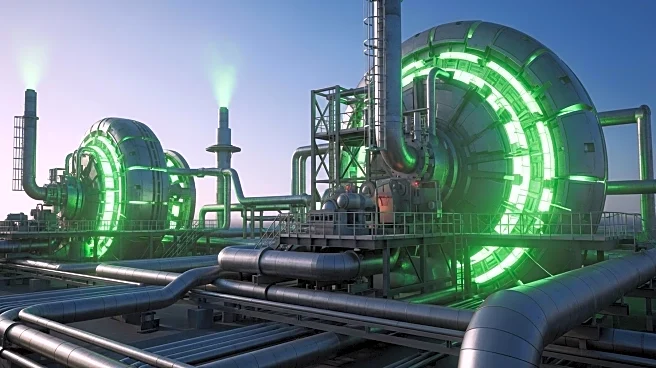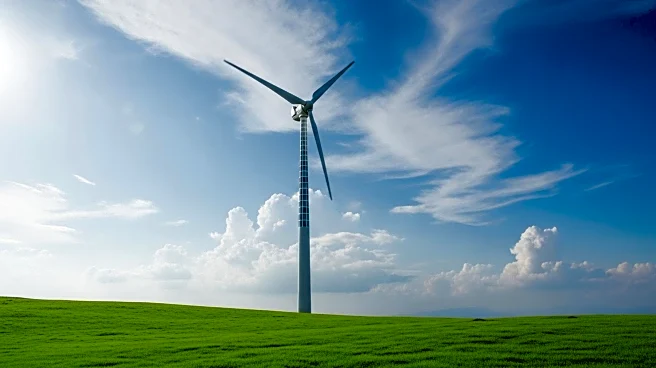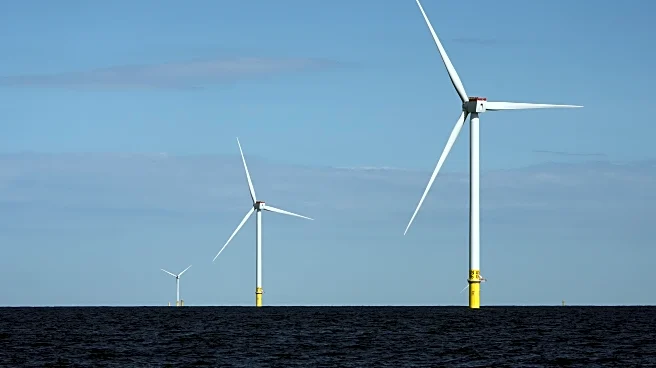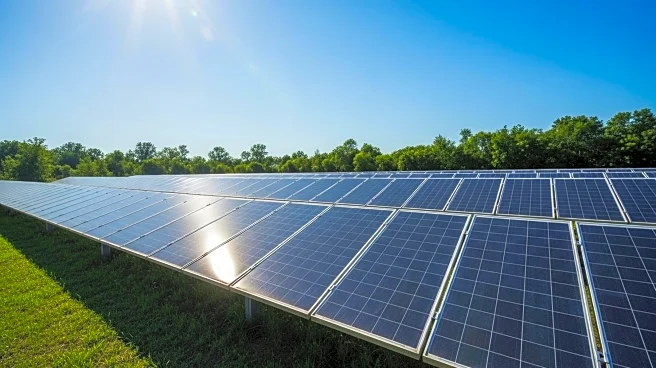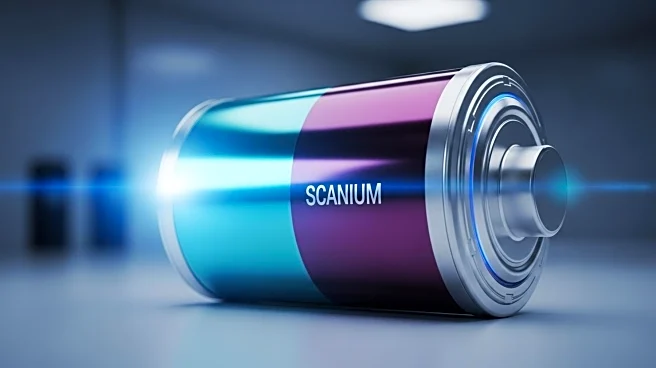What's Happening?
Researchers have conducted an analysis of voltage distributions within carbon dioxide (CO2) reduction electrolysers, aiming to enhance energy efficiency in the production of value-added chemicals and fuels. The study focuses on the economic viability of CO2 electroreduction, which is currently challenged by high full-cell voltages due to various materials and processes between the anode and cathode. The research identifies the cascade CO2 reduction approach as the most energy-efficient candidate for scalable CO2 electroreduction. This method benefits from low membrane overpotential, attributed to the high proton conductivity of the cation exchange membrane. The study also highlights the optimization of the CO electroreduction system, achieving a full-cell voltage of 1.95 V at 200 mA cm−2, providing a framework for advancing more energy-efficient CO2 reduction electrolysers.
Why It's Important?
The findings of this research are significant for the development of sustainable technologies that can reduce greenhouse gas emissions. By improving the energy efficiency of CO2 reduction electrolysers, the study contributes to the economic feasibility of using renewable electricity for chemical and fuel production. This advancement could lead to broader adoption of CO2 electroreduction technologies, potentially transforming industries reliant on fossil fuels and reducing their environmental impact. Stakeholders in the energy and chemical sectors stand to benefit from these innovations, as they offer pathways to cleaner production processes and align with global efforts to combat climate change.
What's Next?
The research provides a framework for further optimization of CO2 reduction electrolysers, suggesting that future studies could focus on reducing overpotentials at the cathode, anode, and intrinsic Nernstian pH gradient. Continued advancements in this area may lead to more scalable and economically viable solutions for CO2 electroreduction. Industry leaders and policymakers may consider investing in these technologies to support sustainable energy initiatives and meet environmental targets. Collaboration between researchers and industry could accelerate the development and implementation of these energy-efficient systems.
Beyond the Headlines
The study's implications extend beyond immediate technological advancements, potentially influencing regulatory and policy frameworks related to carbon emissions and renewable energy. As energy-efficient CO2 reduction becomes more feasible, it may drive shifts in market dynamics, encouraging investment in green technologies and altering competitive landscapes. Ethical considerations regarding the environmental impact of industrial processes may also gain prominence, prompting companies to adopt more sustainable practices.

